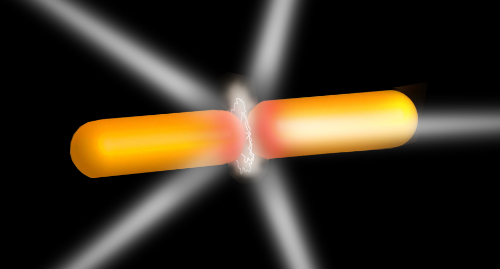Ultrafast Welding Dynamics of Plasmonic Nanorod Dimers
Transient absorption (TA) experiments were performed to determine the mechanisms controlling the welding process of plasmonic nanorod dimers using ultrafast light pulses. The TA signals during the self-assembly and welding of the nanorod dimers were temporally and spectrally resolved, enabling each potential mechanism to be isolated by their associated time scales. For all the TA measurements collected between 5 and 1000 ps, no abrupt or anomalous TA signals were observed that would indicate a welding event had occurred during this temporal regime. A cumulative multipulse welding mechanism beyond 1000 ps is unlikely since the nanorods return to their ground state before the next laser pulse arrives. To understand the dynamics below 5 ps, we fit the welding kinetics data to a rate equation and determined a threshold fluence of 79 μJ/cm2 was needed to initiate welding. To correlate the threshold fluence to a physical mechanism, finite element calculations were used to show the nanorods reached temperatures of 635 K, sufficient to cause surface melting when irradiated with a 75 μJ/cm2 pulse. We then demonstrate the optical forces in the nanojunction are attractive and sufficiently large to displace the molecules linking the unwelded dimer structures. Accordingly, these experiments suggest the welding mechanism is governed by a threshold fluence from a single laser pulse, resulting in the surface of the individual nanorods melting, which are then pulled together by attractive optical forces forming a welded dimer structure. Globally, these results set an upper bound on the rate these materials can be produced.


Leave a Reply